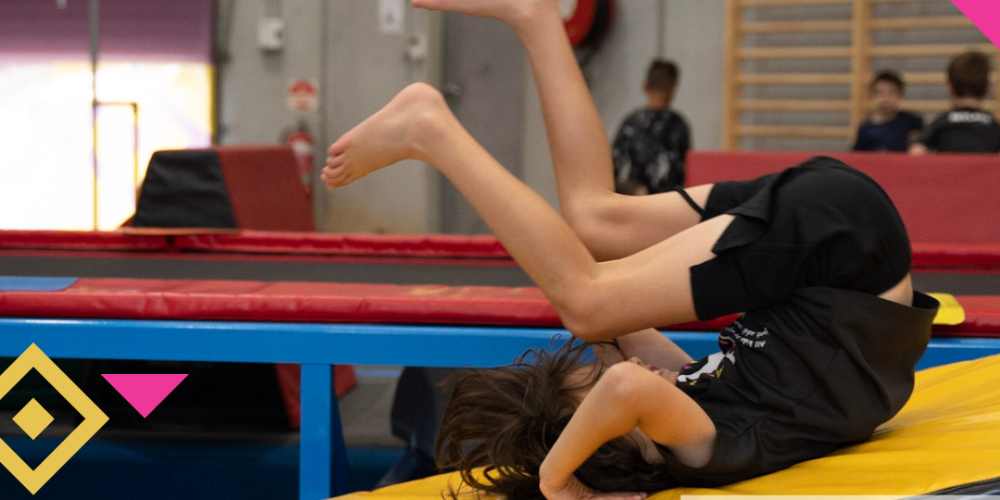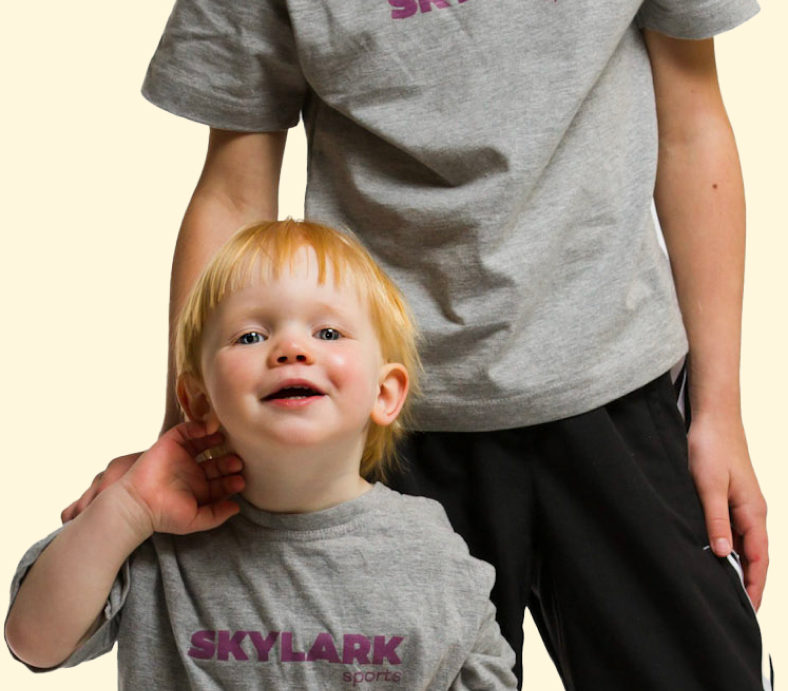Tumbling and gymnastics are two excellent sports that provide a variety of advantages, including improved physical fitness, coordination, strength, and flexibility. However, they vary in several areas, and awareness of these differences can help you decide which one is perfect for your kids to explore.
We can all agree that children can be quite challenging to manage, particularly if your child lacks an outlet to release all their energy. Then, signing them up for a gymnastics or tumbling lesson is a perfect idea. Tumbling and gymnastics are two excellent sports that provide a variety of advantages, including improved physical fitness, coordination, strength, and flexibility. However, they vary in several areas, and awareness of these variations can help you make a wise decision.
I understand how difficult it can be to choose the appropriate activity for your children. That's why I'm here to give simple information and helpful advice and assist you in understanding whether gymnastics or tumbling is the best match for your child.
Let's begin!
What is Gymnastics?
After all, we've all seen the Olympics and have a basic understanding of gymnastics, which involves vaults, beams, and bars. This tremendously athletic sport requires a lot of stunts, including leaps, flips, handstands, and much more.
Gymnastics is a vast discipline and a sport requiring strength, flexibility, endurance, and coordination. Athletes use numerous pieces of gymnastics equipment to accomplish moves, such as handstands, turns, and flips. Rings, parallel bars, balancing beams, high bars, uneven bars, and other equipment may be used.
Gymnastics encourages physical health and develops character traits like drive, attention, and discipline. It is an exciting sport with compelling visuals that displays the remarkable powers of the human body.
What is Tumbling?
One of the gymnastics disciplines is tumbling. It entails a sequence of acrobatic maneuvers carried out on a spring floor. The gymnast performs several maneuvers, including whips, leaps, and flips.
Tumbling combines the gymnastics training-developed talents with a greater emphasis on building explosive strength. It frequently calls for more coordination than other gymnastic events. Tumbling is typically begun in older years since gymnastics instruction is frequently necessary. Although it is more focused than a normal gymnastics class, it nonetheless fosters the growth of many of the same abilities, including coordination, strength, and flexibility.

Gymnastics vs Tumbling - What is the difference
Gymnastics and tumbling are related disciplines that share similarities but have distinct differences.
Scope
In general, "gymnastics" refers to various athletic pursuits, such as artistic, rhythmic, trampoline, and acrobatic gymnastics. On the other hand, tumbling is a particular branch of gymnastics that prioritizes acrobatic floor exercises.
Apparatus
Gymnastics routines are executed on various equipment, including the floor, balancing beam, uneven bars, vault, and pommel horse. However, tumbling can only be done on a mat or spring floor. Beyond the floor, there is no other machinery or equipment involved.
Skill Focus
Gymnastics routines display a variety of abilities, such as flips, twists, leaps, spins, and dance components. Strength, flexibility, balance, and coordination are all highlighted. In contrast, tumbling routines emphasize acrobatic moves, including flips, somersaults, handsprings, and aerials. It places a focus on strong, fluid movements.
Competitive Framework
Gymnastics is a sport that requires competition and has precise rules and scoring standards. Gymnasts compete in events or routines unique to their discipline and are divided into several levels and categories. Competitive tumbling can be done in gymnastics, cheerleading, or acrobatics competitions. It can also be done independently or in conjunction with other performing arts.
Context
Gymnasts often get regulated training under the direction of instructors in specialized gymnasiums and organized programs. Although it may be performed in a gymnastics environment, tumbling is also widely used in other disciplines, such as cheerleading, dance, and acrobatics.
Tips for Choosing Which Is Best for Your Kid
Your child's interests, skills, and objectives should all be considered while deciding between gymnastics and tumbling. The following advice will assist you in making your choice:
Consider your child's age
Gymnastics can begin as early as a toddler, although tumbling is typically optimal for children around 5 or 6. This can also differ amongst gyms because some have minimum age limits for certain classes.
Know your child's experience level
A child may begin gymnastics with no prior experience. Tumbling, on the other hand, necessitates prior gymnastics expertise. If your child has never done gymnastics before, start with a decent gymnastics class before moving on to tumbling.
Recognize their preferences
Discuss what your child enjoys and gets enthusiastic about by talking to them. Do they like various techniques and equipment, or are floor exercises and acrobatics more appealing? You may use their preferences to help you choose the appropriate discipline.
Assess their physical abilities
Consider your child's physical characteristics and skills. Strength, flexibility, balance, and coordination are often needed for gymnastics. The focus of tumbling is largely on strength and acrobatic moves. Consider their physical characteristics and innate abilities when deciding on the discipline that complements your child's talents.
Think about long-term goals
Talk about the aims and long-term objectives of your child. The larger skill base and competitive framework of gymnastics may be more suited if they want to participate at higher levels. Tumbling can be a helpful foundation for anyone pursuing cheerleading, dancing, or acrobatics.
Evaluate available resources
Examine the programs, coaches, and facilities offered in your region. Find trustworthy gymnastics clubs or tumbling courses that offer top-notch training and a welcoming atmosphere. Ensure your chosen discipline offers the tools essential to foster your child's growth and development.
Try taking beginning courses
Numerous gymnastics clubs provide free courses or tryouts. Take advantage of these chances to give your little ones first-hand exposure to gymnastics and tumbling. Before committing to a long-term commitment, this might help them assess their interest, comfort, and enjoyment level in each subject.
Consult a professional
Consult with gymnastics and tumbling coaches, teachers, or other experts. They may offer insightful analysis, evaluate your child's aptitudes, and support you in reaching a well-informed decision based on their knowledge.
At Skylark Sports, we strive to ensure our pathway programs are welcoming, fun and inclusive. Its always been a pleasure for us to answer all your questions, and we will be more than delighted to help you understand and discover your little one's journey towards a happy, healthy and active childhood through gymnastics.
Frequently Asked Questions
What age is appropriate to begin tumbling or gymnastics?
Children as young as 18 months old can take courses in most gymnastics and tumbling programs. The suggested beginning age varies, though, depending on the curriculum. To locate courses for your child that are suitable for their age, it is recommended to contact nearby gymnastics clubs or tumbling centres.
Can guys do tumbling or gymnastics?
Absolutely! Both boys and girls can participate in gymnastics and tumbling. Many gymnastics clubs' courses and programs cater to boys' technical skill development and interests.
Is prior experience required to join gymnastics or tumbling?
No, prior knowledge is not required. Programs for both gymnastics and tumbling commonly provide lessons for beginners of all ages. They are made to gradually introduce and improve abilities, allowing for a range of expertise levels among the pupils.
Is tumbling or gymnastics a dangerous sport?
Gymnastics and tumbling have the same risks of injury as any other physical activity. The risk can be considerably reduced if instruction and practice are conducted under adequate supervision, with competent instructors and the necessary safety precautions. It's crucial to pick reputable programs emphasizing safety and knowledgeable teachers.
Conclusion
While there are some parallels between gymnastics and tumbling in terms of acrobatic motions and athleticism, the main distinctions are in the breadth, equipment, skill focus, competitive framework, and environment in which they are practised.
The most important thing to remember is to emphasize your child's enthusiasm and love for the chosen discipline. Gymnastics and tumbling provide significant physical, social, and mental advantages, so encouraging your child's enthusiasm and fostering a favourable atmosphere for their growth should be your ultimate objective.

